Adaptive Distributed Autonomous
Systems:
Anthropomorphic Androids
Member:
Abderazek Ben Abdallah (PI), Cheng Hong, Mark
Ogbodo, Zhishang Wang
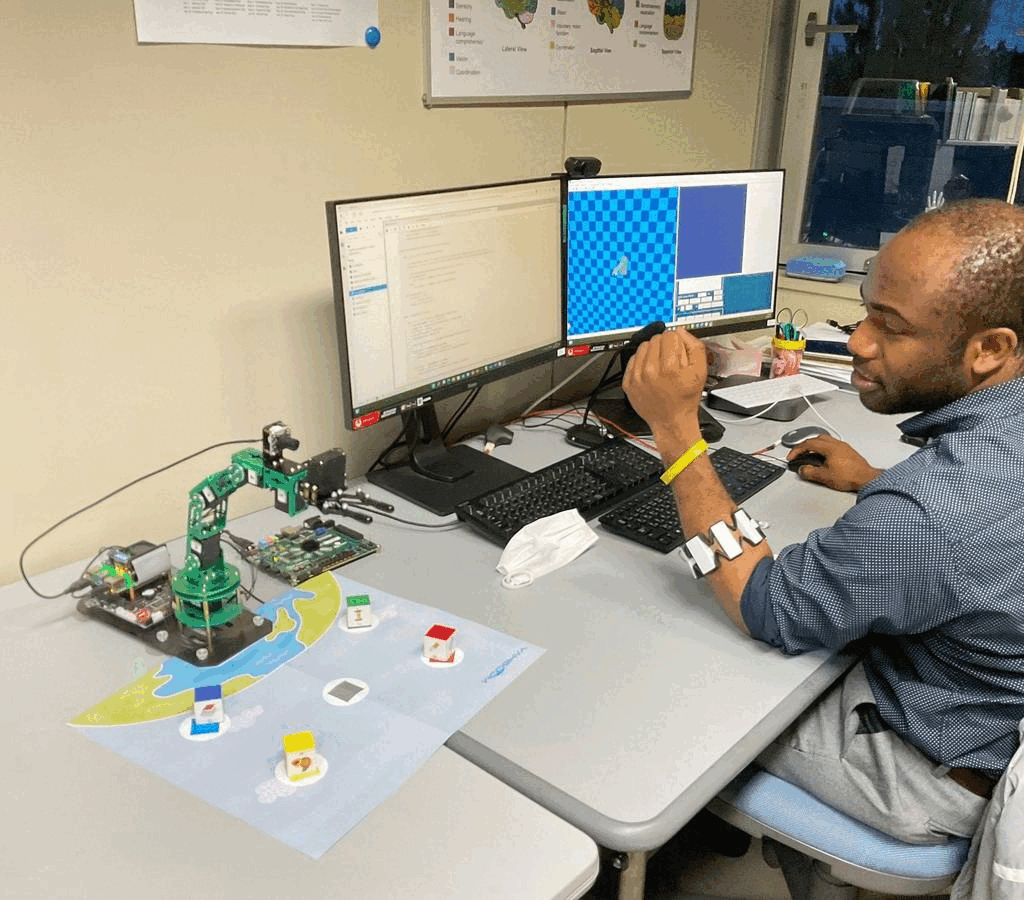
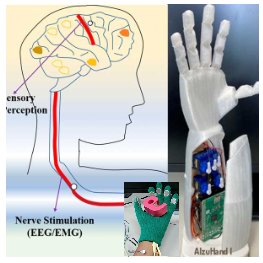 We are actively
researching anthropomorphic prosthetics and
androids, integrating cutting-edge
neuroscience, artificial intelligence, and
robotics to develop highly responsive,
lifelike systems that enhance both human
mobility and interaction. Through
neuromorphic computing and spiking neural
networks, we strive to achieve more natural,
intuitive control, ensuring seamless
communication between artificial limbs,
androids, and biological systems.
Our focus on non-invasive neural interfaces
enables prosthetics to adapt dynamically to
user intent, enhancing precision, comfort,
and fluidity of motion. Meanwhile, our
research on advanced sensory processing for
androids aims to equip robotic entities with
human-like awareness, allowing them to
engage in complex tasks, interpret
environmental stimuli, and interact
intelligently with users. By bridging
the gap between biomechanical engineering
and AI-driven cognition, we are paving the
way for next-generation assistive
technologies and autonomous systems that are
deeply integrated into daily life. Our work
contributes to advancements in
rehabilitation, human augmentation, and
adaptive robotics, revolutionizing the way
artificial systems complement and extend
human capabilities.
|
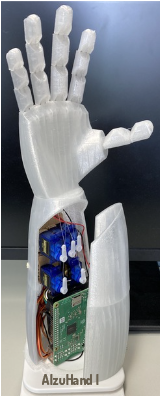 |
Features:
- Name: AIzuHand I
- Total Weight: 422g
(276g without controller)
- Control: sEMG
- DoF: 5
- Feedback: No
- Mode: AN/SN
|
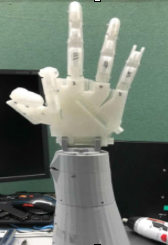 |
Features:
- Name: AIzuHand H
- Weight: 492g
- Control: sEMG, RM
- DoF: 7
- Feedback: No
- Mode: AN/SN
|
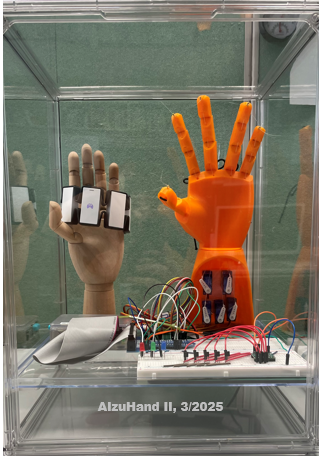
|
Features:
- Name: AIzuHand II
- Weight: --
- Control: sEMG
- DoF: 7
- Feedback: Yes
(Temperature)
-
Mode: AN |
|
- Cheng Hong, Sinchhean Phea,
Khanh N. Dang, Abderazek Ben Abdallah,
''The AIzuHand Neuromorphic Prosthetic
Hand,'' ETLTC2023, January 24-27, 2023.
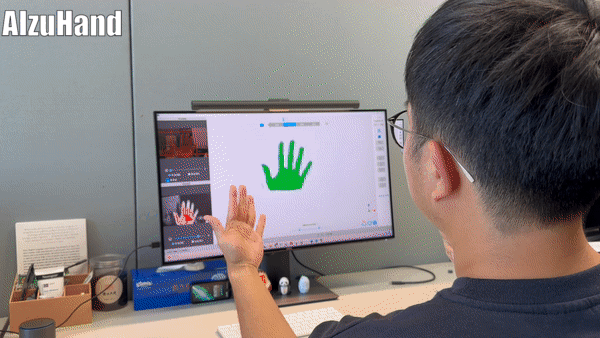 A
myoelectric prosthetic allows manipulation of
hand movements through surface electromyogram
(EMG) signal generated during muscle
contraction. However, the lack of an intuitive
personal interaction interface leads to
unreliable manipulation performance. For
better manipulation, sEMG-based prosthetic
systems require the user to understand their
EMG signal levels and adjust the thresholds
for better movements. A practical prosthetic
is still being challenged by various factors
inherent to the user, such as variation in
muscle contraction forces, limb positional
variations, and sensor (electrode) placements.
Thus, a personal interface that can adjust the
prosthetic parameters across amputees is
required. In addition, this interface is also
needed for some targeted users in pediatrics
who require external assistance for control.
In this work, we present a low-cost real-time
neuromorphic prosthesis hand, AIzuHanda, with
sensory motor integration. We aim to develop
solutions for controlling prosthetic limbs to
restore movement to people with neurologic
impairment and amputation. The AIzuHand system
is empowered by a user-friendly mobile
interface (UFI) for calibration, real-time
feedback, and other functional tasks. The
interface has visualization modules, such as
an EMG signal map (EMG-SM) and mode selection
(MS), for adjusting the parameters of the
prosthetic hand. Furthermore, the interface
helps the user establish a simple interaction
with the prosthetic hand. A
myoelectric prosthetic allows manipulation of
hand movements through surface electromyogram
(EMG) signal generated during muscle
contraction. However, the lack of an intuitive
personal interaction interface leads to
unreliable manipulation performance. For
better manipulation, sEMG-based prosthetic
systems require the user to understand their
EMG signal levels and adjust the thresholds
for better movements. A practical prosthetic
is still being challenged by various factors
inherent to the user, such as variation in
muscle contraction forces, limb positional
variations, and sensor (electrode) placements.
Thus, a personal interface that can adjust the
prosthetic parameters across amputees is
required. In addition, this interface is also
needed for some targeted users in pediatrics
who require external assistance for control.
In this work, we present a low-cost real-time
neuromorphic prosthesis hand, AIzuHanda, with
sensory motor integration. We aim to develop
solutions for controlling prosthetic limbs to
restore movement to people with neurologic
impairment and amputation. The AIzuHand system
is empowered by a user-friendly mobile
interface (UFI) for calibration, real-time
feedback, and other functional tasks. The
interface has visualization modules, such as
an EMG signal map (EMG-SM) and mode selection
(MS), for adjusting the parameters of the
prosthetic hand. Furthermore, the interface
helps the user establish a simple interaction
with the prosthetic hand.
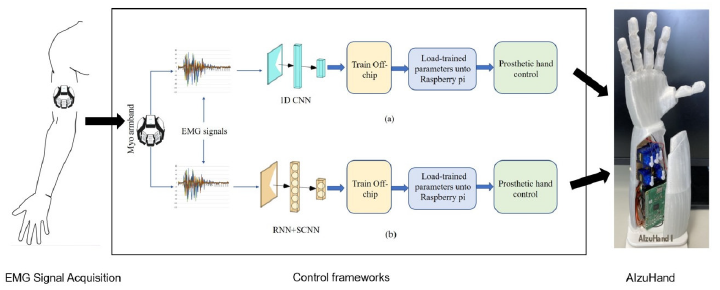
|
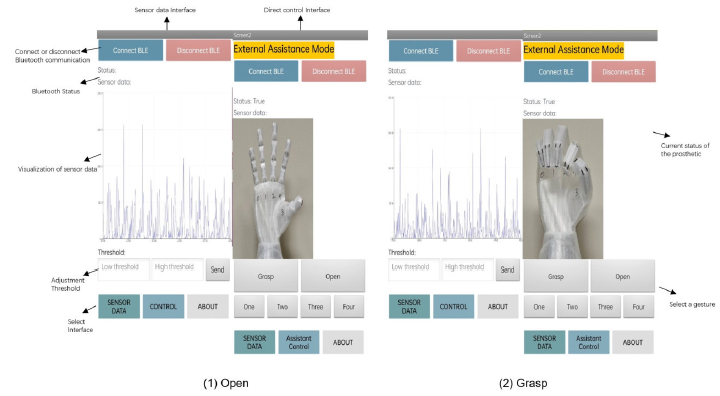 |
|
- Mark Ogbodo, Abderazek Ben
Abdallah, ''Study of a Multi-modal
Neurorobotic Prosthetic Arm Control
System based on Recurrent Spiking Neural
Network,'' ETLTC2022, January 25-28,
2022
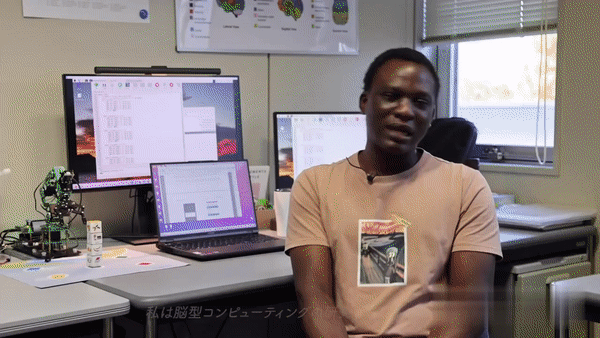 The use of robotic arms in
various fields of human endeavor has increased
over the years, and with recent advancements
in artificial intelligence enabled by deep
learning, they are increasingly being employed
in medical applications like assistive robots
for paralyzed patients with The use of robotic arms in
various fields of human endeavor has increased
over the years, and with recent advancements
in artificial intelligence enabled by deep
learning, they are increasingly being employed
in medical applications like assistive robots
for paralyzed patients with  neurological
disorders, welfare robots for the elderly, and
prosthesis for amputees. However, robot arms
tailored towards such applications are
resource-constrained. As a result, deep
learning with conventional artificial neural
network (ANN) which is often run on GPU with
high computational complexity and high power
consumption cannot be handled by them.
Neuromorphic processors, on the other hand,
leverage spiking neural network (SNN) which
has been shown to be less computationally
complex and consume less power, making them
suitable for such applications. Also, most
robot arms unlike living agents that combine
different sensory data to accurately perform a
c neurological
disorders, welfare robots for the elderly, and
prosthesis for amputees. However, robot arms
tailored towards such applications are
resource-constrained. As a result, deep
learning with conventional artificial neural
network (ANN) which is often run on GPU with
high computational complexity and high power
consumption cannot be handled by them.
Neuromorphic processors, on the other hand,
leverage spiking neural network (SNN) which
has been shown to be less computationally
complex and consume less power, making them
suitable for such applications. Also, most
robot arms unlike living agents that combine
different sensory data to accurately perform a
c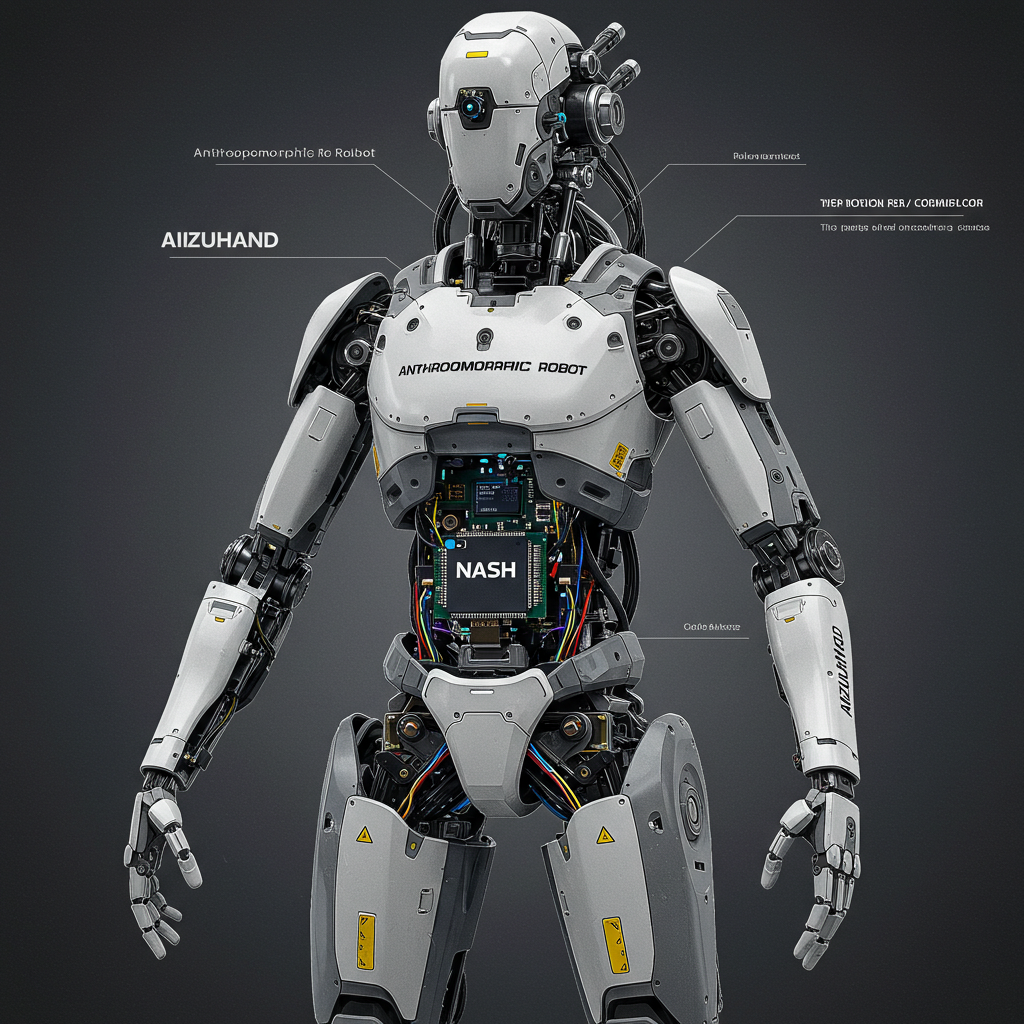 omplex task, use
uni-modal data which affects their accuracy.
Conversely, multi-modal sensory data has been
demonstrated to reach high accuracy and can be
employed to achieve high accuracy in such
robot arms. omplex task, use
uni-modal data which affects their accuracy.
Conversely, multi-modal sensory data has been
demonstrated to reach high accuracy and can be
employed to achieve high accuracy in such
robot arms.
This work presents the study of a multi-modal
neurorobotic prosthetic arm control system
based on recurrent spiking neural network. The
robot arm control system uses multi-modal
sensory data from visual (camera) and
electromyography sensors, together with
spike-based data processing on our previously
proposed R-NASH neuromorphic processor to
achieve robust accurate control of a robot arm
with low power. The evaluation result using
both uni-modal and multi-modal input data show
that the multi-modal input achieves a more
robust performance at 87%, compared to the
uni-modal.
-
Abderazek Ben Abdallah ,
Zhishang Wang, K. N. Dang, Masayuki
Hisada, '' Lacquering
Robot System [漆塗りロボットシ
ステム],' 特願2024-056380 (Macrh 29,
2023)
The
'Self-Controlled Urushi Robot Hand
Painting System' is a cutting-edge robotic
system designed to meet the evolving needs
of modern Urushi painting. It skillfully
manages a wide range of customer orders,
interprets request formats such as images,
text, or speech, and effectively handles
the Urushi painting process. The system
also ensures efficient task allocation
based on robot hand 's availability and
evaluates the adequacy of materials. It
includes a blockchain platform that
enables secure Urushi trading by
generating digital certificates for the
authenticity, preserving the integrity of
traditional Urushi craftsmanship in a
modern technological environment. In
addition, robot hand intelligently
monitors material inventory and
autonomously procures the needed material
by either using its profits or debiting
the necessary amounts from linked bank
accounts.
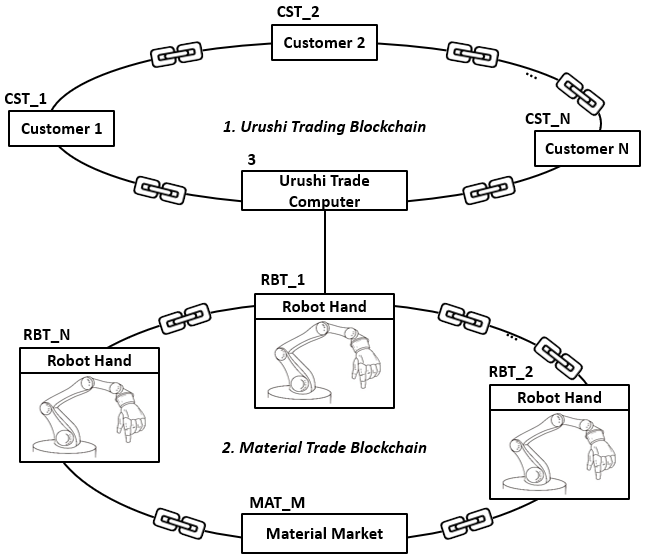
|
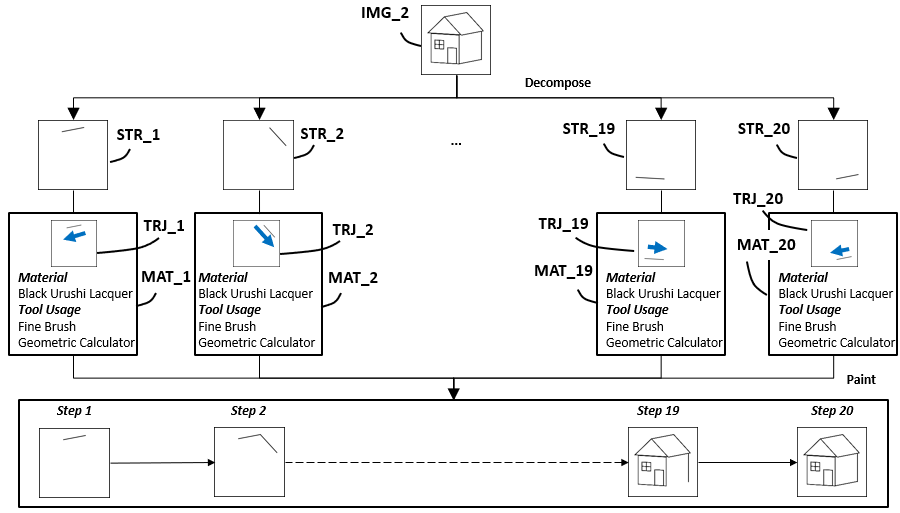
|
-
Analytical
Modeling of Task Allocation for
Distributed
Anthropomorphic Robots in Mission-Critical
Environments
Zhishang Wang (University of Aizu, Japan);
Yassine Mohamed Khedher (The
University of Aizu, Japan); Khanh N. Dang
(University of Aizu, Japan); Michael
Cohen (Higashi Nippon International
University, Japan); Abderazek Ben Abdallah
(The University of Aizu, Japan)
Efficient task allocation among mobile
agents is
critical in high-stakes scenarios such as
disaster response, battlefield coordination,
and emergency healthcare. This paper
introduces a framework for task allocation
across distributed anthropomorphic robots
(androids) operating in dynamic,
resourceconstrained environments. The system
leverages decentralized
decision-making, context-aware
prioritization, and adaptive communication
protocols to maintain robust performance
under
intermittent connectivity, limited energy
availability, and unpredictable task
demands. We present an analytical model that
formalizes the interplay between agent
autonomy, resource limitations, and task
urgency, enabling adaptive behavior in
volatile
conditions. Preliminary evaluation indicates
the feasibility and
effectiveness of the proposed approach, with
notable gains in
task distribution efficiency, reduced
latency, and improved fault
tolerance compared to centralized
alternatives. In particular, the
proposed leader-based allocation method that
incorporates force,
energy, and timing constraints achieves a
success rate about 2.0×
higher than existing approaches with 30
tasks and 100 androids
and more than 3.5× higher with 50 tasks and
300 androids. These
results lay the foundation for resilient,
scalable coordination
mechanisms in mission-critical mobile
networks.
Index Terms—Android Systems, Distributed
Task Allocation,
Analytical Modeling, Mission-Critical

|
|
|

